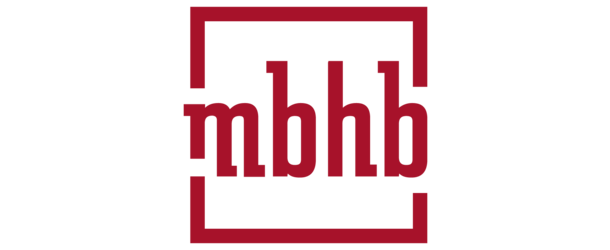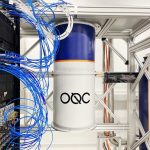How to Develop a Strong Quantum Patent Portfolio (Part 1)

Over the course of the last few years, interest and investment in quantum-related technologies (and quantum computing, in particular) has exploded. For example, it is predicted that by 2026, the global quantum computing technologies market should reach $1.6 billion and the U.S. government has announced more than $1.9 billion in funding.[1] Unsurprisingly, the number of patents filed and obtained on quantum technologies has also increased substantially in recent years.[2] Obtaining quantum computing patents can present a number of unique challenges, though. In this two-part series, I will highlight important things to be considered when developing a quantum patent portfolio.
Consider Patentability Challenges
One of the biggest stumbling blocks to developing a quantum patent portfolio is the issue of patentability (i.e., what can you get a patent on). In many jurisdictions (including the U.S.), there is a doctrine in patent law that indicates that certain types of inventions cannot be patented. For example, in the U.S., you cannot get a patent on a law of nature (e.g., gravity) or a so-called “abstract idea.”[3] This doctrine can present a significant obstacle to obtaining patents on many quantum technologies, particularly for inventions to quantum computing algorithms. The metes and bounds of what is and is not an “abstract idea” is incredibly convoluted, which has led some in Congress to seek a change to the present law.[4] It is well-beyond the scope of this article to go into detail regarding “abstract ideas,” but suffice it to say, the more an invention can be tied to a device carrying out an actual function and the less the invention can be described in purely mathematical and/or algorithmic terms, the easier (and therefore cheaper) it will be to obtain a patent. As an example, it would likely be much easier from a patentability perspective to obtain a patent on IBM’s Osprey processor than on the Deutsch-Jozsa algorithm.
Understand Collaboration and Ownership
As noted above, there has been a huge surge in quantum funding, both internationally and domestically.[5] This is important because, in the United States, when patents issue for inventions that were developed using federal funding, the federal government retains some rights in the invention (e.g., march-in rights under the Bayh-Dole Act).[6] While it would be beyond the scope of this article to fully discuss the federal government’s rights in federally funded inventions, the mere existence of such rights should be borne in mind when accepting federal funding.
Further, there is increasing collaboration between corporations, governments, and universities in the quantum space.[7] While such collaboration is great for rapid technology development, it can lead to additional considerations about patent ownership. Joint research agreements present some unique challenges regarding ownership, for example (e.g., who owns the eventual patent, who is paying for the preparation and filing of the patent application, do parties to the joint research agreement who do not own the patent have the right to license the patent and at what cost, etc.). Such challenges should be carefully considered and agreed to (preferably when entering into the joint research agreement) in order to ensure that patent rights are properly acquired, maintained, and distributed).
Think Through Assertion and Licensing Complexities
A patent provides its owner with the right to exclude others from infringing (e.g., making, using, selling, offering for sale, or importing) the patented invention within a given jurisdiction (e.g., within the United States). Hence, the value of a patent derives from a patent owner’s ability to sue others who commit such acts of infringement and/or ability to license the technology to others (i.e., agree not to sue in exchange for a royalty). There are some important nuances to consider regarding the scope of your quantum patents, though.
As one example, so-called “split infringement” can be a challenge when quantum entanglement and/or communication is involved. For instance, if one was attempting to obtain a patent on the famous BB84 quantum key distribution (QKD) method, one would have to consider whether you would like to have patent protection over the actions of only one party (e.g., only Alice or only Bob) and/or of both parties. For a patent that required the actions of both parties for infringement, the damages in an infringement suit and/or the licensing royalties may be greater. However, it may be harder to sue and/or license to someone (e.g., Alice) if that person is only committing or interested in committing half of the activities in the method. Hence, it can be wise to have patent claims (the portions of the patent that lay out what is required for infringement) that cover the actions of Alice, the actions of Bob, and the method performed by both Alice and Bob.
Jurisdictional considerations may also be at play. For example, what if Alice was located in the United States and Bob was located in Canada? You would want to consider whether you would like to pursue U.S. patent protection, Canadian patent protection, or both, and which prospective acts you would like to claim in the patents in the respective jurisdictions.
Additionally, the doctrines of induced infringement and/or contributory infringement may warrant consideration (especially when quantum entanglement is involved).[8], [9] For instance, if Alice entangles two qubits and gives one of the two qubits to Bob, future actions by Alice on her own qubit may manipulate Bob’s qubit. If you would like to be able to sue Alice for infringement and you could not prove that Alice committed all of the elements of your claimed invention (e.g., if some of the elements captured subsequent actions by Bob’s qubit), you may consider whether secondary liability could be used. Obviously, how you draft your patent claims is highly fact-specific to your invention and many factors will need to be weighed.
About the author
Andrew Velzen is an associate at intellectual property law firm MBHB. Mr. Velzen draws on a background in electrical engineering to prepare and prosecute patents for clients in the electrical, mechanical and materials, software, and telecommunications industries.
[1] https://www.mckinsey.com/capabilities/mckinsey-digital/our-insights/quantum-computing-funding-remains-strong-but-talent-gap-raises-concern#/
[2] https://link.springer.com/article/10.1007/s40319-022-01209-3
[3] See, e.g., 35 U.S.C. § 101 and Manual of Patent Examining Procedure (M.P.E.P.) § 2106.04(a)
[4] https://ipwatchdog.com/2023/06/26/senators-patent-reform-bills-offer-strong-way-forward-us-patent-system/id=162686/
[5] https://fedtechmagazine.com/article/2022/06/where-quantum-technology-going-federal-government
[6] 35 U.S.C. § 203
[7] https://www.forbes.com/sites/forbestechcouncil/2021/10/11/quantum-collaboration-early-coordination-efforts-will-speed-adoption/?sh=4a0c71b95ef0
[8] https://www.law.cornell.edu/wex/inducement_of_infringement
[9] https://www.law.cornell.edu/wex/contributory_infringement























